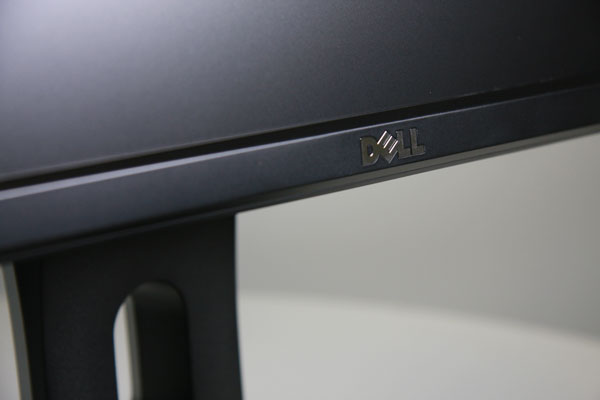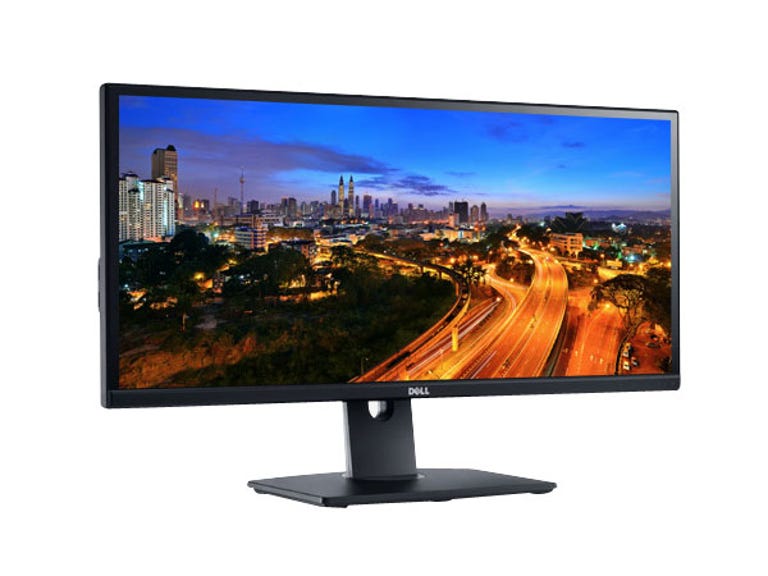 Why You Can Trust CNET
Why You Can Trust CNET Dell UltraSharp U2913WM review: Dell UltraSharp U2913WM
Despite some technical flaws, the U2913WM is a good monitor with an excellent price. At AU$599, it's enough that people will be asking if they want a 27-inch with the extra 360 vertical pixels, or if 21:9 is in their future.
There are a few things that strike you when you assemble the U2913WM. The first is the most obvious, its 21:9 aspect ratio, with the fascinating resolution of 2560x1080. The second is the fact that the panel is incredibly close to the surface and that the bezel is very thin, at just over 10mm, giving a more immediate feel to the monitor.
The Good
The Bad
The Bottom Line
The third is that the screen seems to darken more quickly on the verticals than what we're used to with IPS — or perhaps it's just the relatively short height that makes us think we can get closer than usual. It's an LG panel, and LG itself has a monitor available with the same panel.
Dell's kept the stand from the rest of its 2013 financial-year range, but the panel design has changed for the U2913W, with a thicker bar at the base (like a chin) to house the buttons, while the rest of the monitor is flat and flush.
As a positive, unlike the U2713HM, we didn't notice a faint criss-cross pattern across the panel.

Dell's new industrial design is striking.
(Credit: Craig Simms)
Specs at a glance
| Size | 29 inches |
|---|---|
| Resolution | 2560x1080 |
| Aspect ratio | 21:9 |
| Pixel pitch | 0.265 |
| Panel technology | AH-IPS |
| Viewing angles (10:1 contrast) | H: 178° V: 178° |
| Response time | 8ms G2G |
| Max vertical refresh | 60Hz |
| Connections | DVI, HDMI, VGA, DisplayPort in, Mini DisplayPort in, DisplayPort Out, 3.5mm line out, 1x USB upstream, 4x USB 3.0 downstream |
| Accessories | DVI, Mini DisplayPort to DisplayPort, power cables |
Stand and ergonomics
Dell's stand is similar to the one used on the U2713HM — giving the user tilt, swivel and height adjustment; however, unlike the 27, the U2913WM won't rotate 90°. Given the extra length involved, this isn't surprising.
No 90° rotate due to the size of the monitor, but otherwise, the full range of movements have been included.
(Credit: Craig Simms)
Connections
Power, power for an optional sound bar, VGA, DisplayPort, Mini DisplayPort, DVI, HDMI, DisplayPort out, 3.5mm line out, USB 3.0 upstream, 2x USB 3.0 downstream.
(Credit: Craig Simms)
Another two USB 3.0 ports, which often acted only like USB 2.0 ports.
(Credit: Craig Simms)
DisplayPort out is an interesting addition, allowing you to daisy chain another monitor from the U2913WM.
Just like the U2713HM, Dell's USB 3.0 ports are under-performers. A USB stick that gained 245MBps sequential read speeds when connected directly to the system only achieved 214MBps when connected to the monitor.
Weirdly, despite the side ports being marked SuperSpeed (USB 3.0), they would only perform at USB 2.0 speeds on two out of three of our USB 3.0 flash drives. We requested another U2913WM sample to see if it was a one-off issue, but received another engineering sample, rather than a retail product. We'd be curious to hear if your retail-bought U2913WM suffers from the same issue.
Buttons and on-screen display (OSD)
Dell has taken a step back in terms of usability with the buttons on the U2913WM — rather than the user pressing any button and the menu coming up, they now have to specifically press the menu button, which is not the best for low light situations. At least it's placed next to the power button, which is always lit.
Not as usable as previous iterations, but they do the job.
(Credit: Craig Simms)
Each of the buttons makes a completely unnecessary and annoying beep, which can thankfully be turned off. The buttons otherwise remain context sensitive to the task at hand, making interaction easy.
The factory menu can be brought up by turning the monitor off, then holding the menu button, the button two across from it and the power button until the screen turns on. Then press the button on the far left to bring up the menu. A word of warning, there's no context sensitive overlays for the buttons in the factory menu — from the left, you have up, down and OK.
The proper OSD offers the usual spread of features that you'd expect to see on a monitor, plus aspect ratios in 21:9, 16:9, auto scaling and 1:1. There's also Smart Video Enhance (basically a user-customisable preset), and Uniformity Compensation, which attempts to provide an even backlight and consistent colours across the whole screen, but does tend to dim it significantly in the process.
Picture by picture mode is enabled, and when hooked up over DVI, we were able to use VGA or either DisplayPort for a separate image. We assume that HDMI uses the same circuitry, as putting DVI and HDMI side by side is not an option.
We're struggling to identify the usefulness of this, but there's one final feature that's beyond the normal, and that's the ability to flip the image on the screen 180°.
Performance
Lagom.nl LCD tests
After calibrating to a target brightness of 140cd/m² with an X-Rite i1Display 2, Eye-One Match 3 and tweaking with HCFR, the U2913WM was run through the Lagom.nl LCD tests.
| Image tests | |||||
|---|---|---|---|---|---|
| Contrast | Sharpness | Gamma | Black level | White saturation | Gradient |
| Pass | Not enough granularity in control. | Pass | Pass | Pass | Pass |
We couldn't get the right level of sharpness, with Dell's control only progressing in increments of ten. At 50, it was too sharp; at 40, it was not sharp enough.
| Inversion pixel walk tests | ||||||||||
|---|---|---|---|---|---|---|---|---|---|---|
| Test 1 | Test 2a | Test 2b | Test 3 | Test 4a | Test 4b | Test 5 | Test 6a | Test 6b | Test 7a | Test 7b |
| Pass | Pass | Pass | Turns purple | Turns purple | Turns purple | Pass | Pass | Pass | Turns purple | Turns purple |
Something we've seen on very few monitors before, the U2913WM manages to turn solely greyscale colours to purple. Impressively, there's no flicker in any of the tests, but we'd argue that completely changing colour is a bigger issue.
Input lag
Measured against a Samsung SyncMaster 975p CRT and using a Canon 40D set to a shutter speed of 1/320, an average of over 60 photographs were taken using StoppUhr. Lag time was recorded at 25ms, or about 2 frames behind — which is perfectly fine for most circumstances. We perceived no problems with a quick session of Serious Sam HD, and the experience was appropriately cinematic.
HDMI performance
While a monitor might have an HDMI port, there's no guarantee that it'll display images as expected. We hooked up a PlayStation 3 and checked for 24p capability and judder, as well as running the HQV Blu-ray test to see how well it coped with an interlaced source and noise.
| 24p capable | Understands YUV | Mission: Impossible III scene 11 judder test | Mission: Impossible III scene 14 judder test |
|---|---|---|---|
| Yes | Yes | Judder | Judder |
| HQV noise reduction score | HQV video resolution loss score | HQV jaggies score | HQV film resolution loss score | HQV film resolution loss — stadium score | Total score out of 100 |
|---|---|---|---|---|---|
| 10 | 20 | 10 | 0 | 0 | 40 |
Dell usually performs better than most with interlaced sources over HDMI, and here it once again does comparatively well. It almost passed the Film Resolution Loss Test for an extra 25 points, but one of the boxes with fine horizontal black and white lines was strobing.
Watching films is a mixed experience on a 21:9 monitor. Most consumer video comes in 16:9, meaning that you're going to have vertical black bars on either side of the movie. If the movie is 21:9, but has been transferred to 16:9 instead of cropped, you'll get black bars on all sides, making the video seem like a postage stamp in comparison to the screen.
Toshiba got around this by including some auto-cropping and scaling software in its media player for the Satellite U840W, but purchasers of the U2913WM will have to sort their own 21:9 content, or source a software player that can do custom cropping and upscaling to compensate.
Viewing angles
IPS provides its typically good viewing angles.
(Credit: Craig Simms)
Light bleed
While subject to the usual IPS glow on a dark screen, our review sample of the U2913WM suffered from subtle light bleed at the top of the screen.
It's important to note that the effects of light bleed will likely change from monitor to monitor, regardless of make.
Power consumption
We measured power consumption using a Jaycar mains digital power meter. It's important to note here that, due to limitations of the meter, measurements are limited to values of 1W and greater, and are reported in 1W increments.
All measurements, screen brightness and contrast were set to 100 per cent and a test image was displayed.
| Juice Box |  |
|---|---|
| Maximum power draw | 42W |
| Power-saving mode | 12W |
| Off | 12W |
With this many pixels to power, Dell's screen was never going to be particularly frugal at full power — but it doesn't set power all the way off either when it goes to sleep.
Warranty
Dell covers the U2913WM with a three year warranty, and operates off a zero bright dot policy for that term. If you have dark pixels though, you'll have to accrue six before Dell will swap out your panel.
Conclusion
We really like the U2913WM, and we wish that the U2713HM had followed the same design. Sadly, it looks like the upcoming U2413 and U2713H are following with the old look.
What's rather spectacular about the U2913WM, though, is the price — at AU$599, it's enough that people will be asking if they want a 27-inch with the extra 360 vertical pixels, or if 21:9 is in their future.


